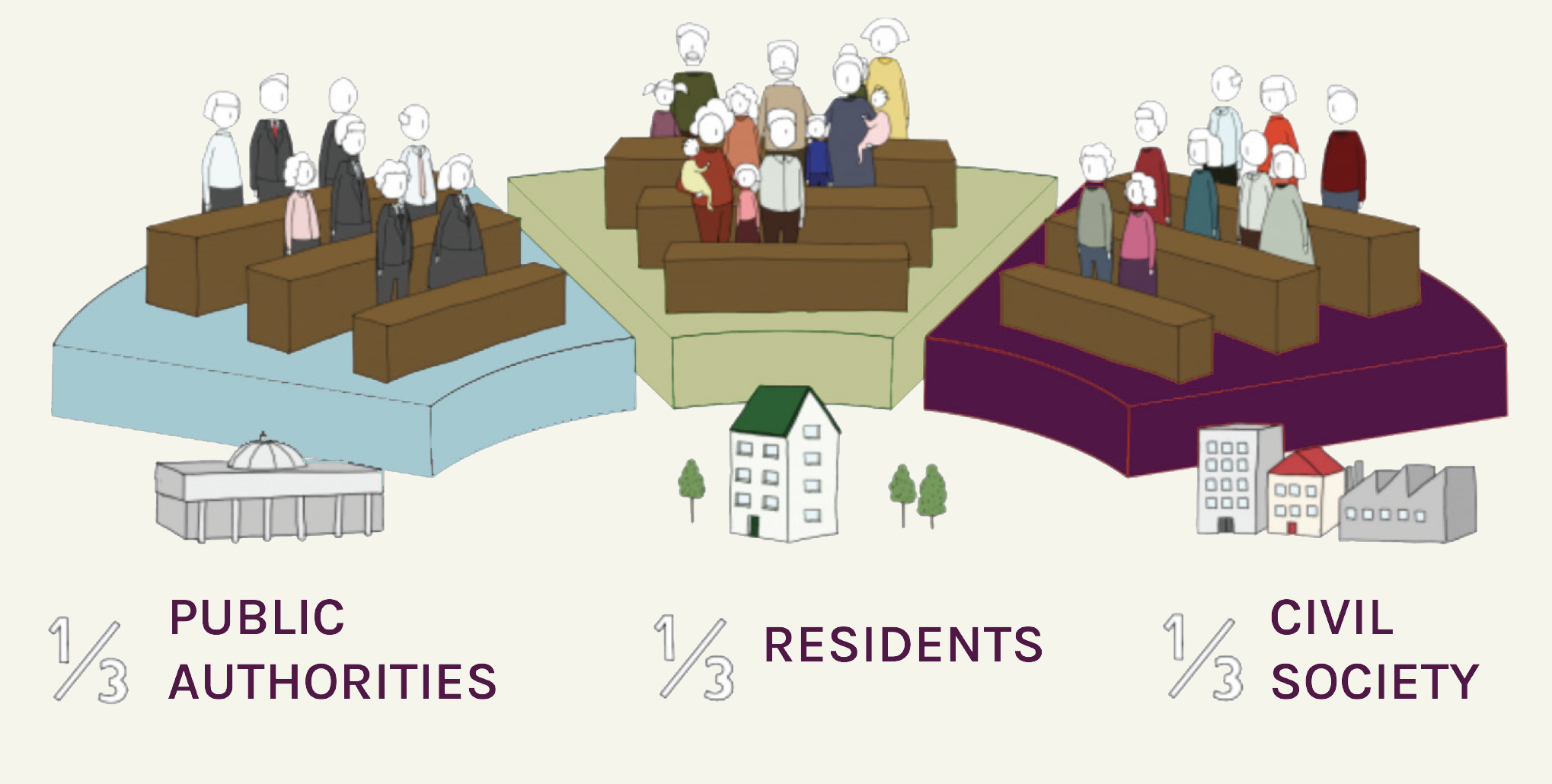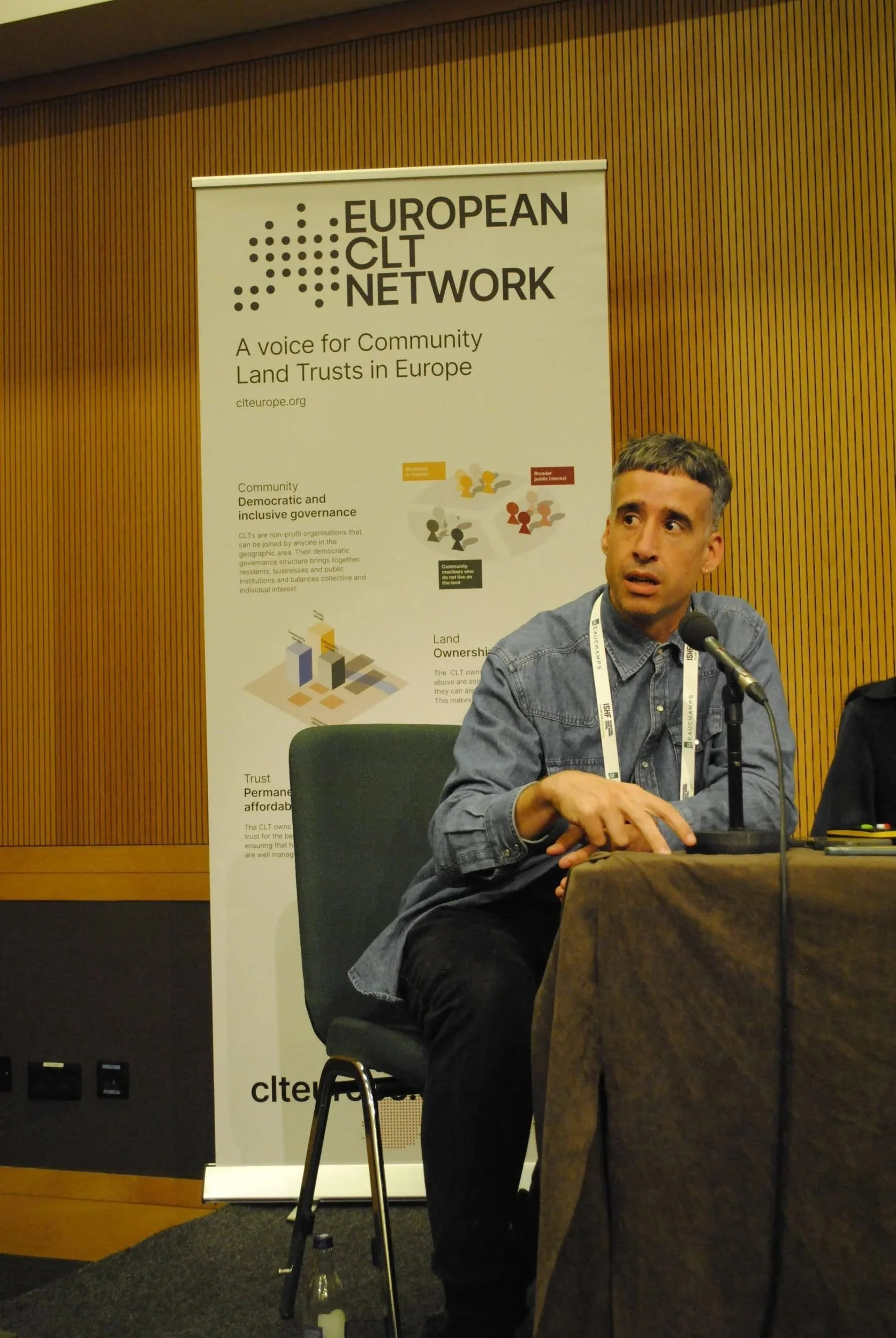Part 2. Justice Through a Commons-Based Approach to Land
The CLT Movement: Adapting Tripartite Governance for Equitable Development Across Diverse Geographical Contexts
In June 2025, Community Land Trust (CLT) practitioners from across the world gathered in Dublin for a session organized by the European CLT Network in collaboration with the International Center for CLTs during the International Social Housing Festival.
"Justice through a commons-based approach to land" was the topic that set the tone for all panelists in describing how they work, their journey, and their challenges. It is also the principle that guides all CLTs, however diverse they are. From the US civil rights era to their evolution into a replicable, adaptable, strategic innovation, CLTs have embedded this idea of separating land ownership from homeownership as a way to secure the right to housing. Permanent by design, it is this commons-based, justice-oriented vision that underscores the growing success of Community Land Trusts worldwide.
CLTs originated as a tool for political justice and reparation, and while their political action remains central to their development, the stability of the democratic, typically tripartite governance model is what truly enables them to remain inclusive and permanently affordable even through changes in geography and scale. From Ireland to the US, from the UK to Catalonia Spain, social learning and innovation have guided their equitable expansion, balanced with a careful eye on institutionalization and staying true to the roots of the model.
But at a time when the housing crisis is on the cover of newspapers everywhere, a pressing question remains: how can CLTs reconcile the need for scaling and their commitment to democratic governance?
Since their inception, Community Land Trusts have been built on a tripartite governance model designed to balance power among three constituencies. While the exact composition can differ from place to place—sometimes residents, neighborhood representatives, and members of the broader community; in other cases residents, civil society actors, and public-interest representatives—the guiding principle is the same: ensuring that no single group dominates decision-making, especially when the last category includes institutional or public stakeholders. As Brenda Torpy from Burlington CLT explains:
© Cork CLT
"Our membership has the final vote on major decisions, including the sale of land, changes to our resale restrictions and bylaws, and the disposition of assets. Residents elect their own seats and together with the general members, elect the rest of the board at our annual meeting. Due to term limits, our structure stays the same."
This governance model has proven successful not only for Burlington but for CLTs more broadly: today, 8% of Burlington's housing is owned and stewarded by CLTs.
The earliest CLTs adopted this model specifically to foster community empowerment, staying true to the movement's grassroots origins. However, as CLTs expand across different geographies, scopes, and scales, a critical question emerges: how can this delicate balance be preserved?
The Challenge of Cultural Adaptation
As CLTs spread internationally, the fundamental challenge lies in adapting this governance structure while maintaining genuine community control and equity as core principles—essential elements for the long-term stability and effectiveness of the CLT model.
Tripartite governance was created as a way of preventing concentration of power while ensuring meaningful participation across diverse communities, thus addressing potential exclusions or marginalization. All practitioners from the panel agreed: it remains the defining element of the CLT model, to be adapted and translated, but not transformed.
Eve Olney from Cork CLT offered compelling insights into adapting the model to Ireland's specific geographical and legal context. She emphasized the need for cultural adaptation, particularly in confronting the top-down power dynamics that still dominate the real estate industry. Staying true to the tripartite model meant asking stakeholders to, in her words, "relinquish control."
Cork CLT's approach combines social learning and collective practice-building. Through workshops, members test scenarios, agree on practices and values, develop manifestos, and establish shared principles. This co-construction process, inspired by sociologist Etienne Wenger's concept of social learning, creates “day-to-day social community practices” that embed the tripartite model, even in a challenging cultural environment.
The Competition Dilemma
Another significant challenge of CLT expansion involves competition among community-led projects. With limited resources in both land and financing allocated for such initiatives, what Adrià Garcia i Mateu from XES in Barcelona calls the "Hunger Games effect" has emerged: an ongoing challenge within regular competition frameworks that erodes cooperation and solidarity between communities.
For Garcia i Mateu, the solution lies in institutional cooperation and formalization through municipal support structures. Rather than pitting communities against each other for scarce resources, local authorities and institutions must create frameworks that enable collaboration and mutual support among CLT initiatives.
Preserving Democracy Through Growth
As the CLT movement expands globally, these experiences highlight the intentionality required to maintain democratic governance while adapting to local contexts. Success depends not on rigid adherence to a single model, but on preserving core principles while developing culturally responsive governance practices.
Panelists agreed that the path forward for the growing international CLT movement requires sustained commitment to social learning, institutional cooperation, and the recognition that true community empowerment takes time to develop. As Brenda Torpy from the International Center for CLTs put it:
“My belief has always been that the choice is not between scale and community leadership. The choice is whether you continue to build that leadership or not.”
Brenda Torpy’s insight brings a compelling question, raised directly by Adrià’s testimony: when scaling is necessary, is institutional collaboration an absolute necessity - and if so, how can it be done well?

